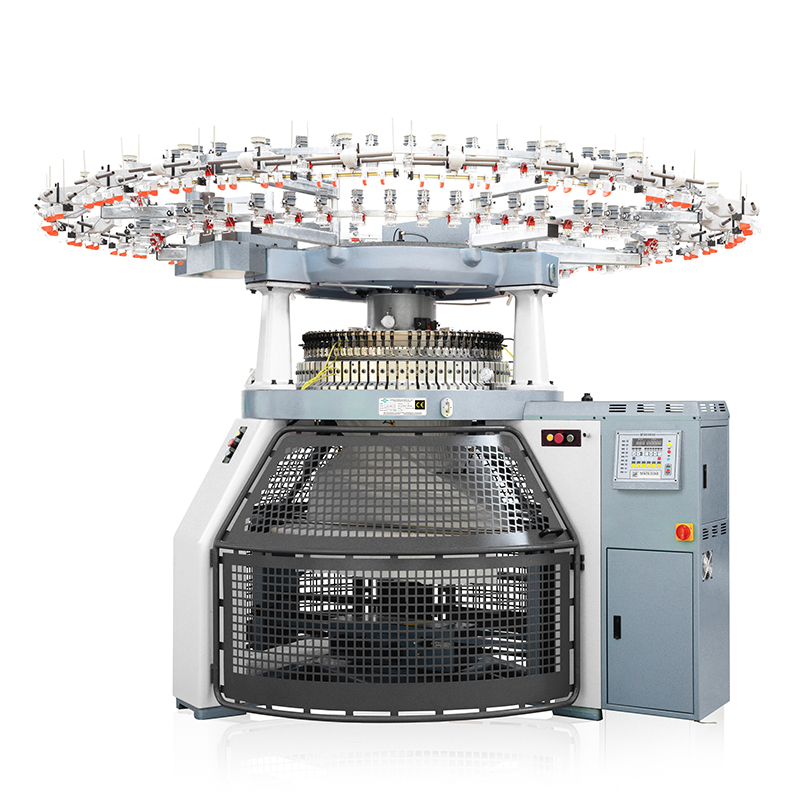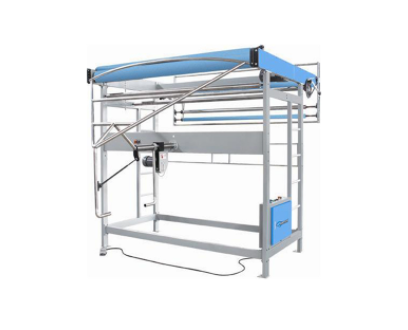1. What is heat setting?
In textile production, setting refers to the processing of fibers, yarns, fabrics or other textiles to obtain a desired form (including state, size or structure, etc.) after a certain treatment, and strive to make these forms have good stability. Heat setting of synthetic fibers is one way of setting.
The heat-setting of synthetic fiber blended or interwoven fabrics, such as polyester/cotton, nylon/cotton, cotton/spandex elastic fabrics, etc., is also carried out for the chemical fibers therein.
Synthetic fibers have a short heat treatment time in spinning and molding, and have internal stress; they are subjected to repeated mechanical forces such as stretching and twisting in weaving and dyeing and finishing, resulting in a certain degree of deformation and internal stress, which makes synthetic fibers. Fibers and their fabrics shrink and wrinkle when exposed to heat.
The purpose of heat setting is to eliminate the existing wrinkles on the fabric, improve the dimensional thermal stability of the fabric and not easily produce wrinkles that are difficult to remove.
Heat-setting can also improve or change the strength, hand feel, and smoothness of the surface of the fabric to a certain extent, and it also has a certain impact on the dyeing performance.
Therefore, synthetic fiber fabrics and synthetic fiber blended or interwoven fabrics must be heat-set during the dyeing and finishing process.
A certain degree of improvement or change also has a certain impact on the dyeing performance.
Therefore, synthetic fiber fabrics and synthetic fiber blended or interwoven fabrics must be heat-set during the dyeing and finishing process.
Dimensional fabrics undergo two to three heat setting treatments

2. Heat setting principle
Heat setting is to use the thermoplasticity of synthetic fibers to maintain a certain size and shape of the fabric, and heat it to the required temperature, so that the movement of the fiber molecular chain is intensified, the internal stress of the fiber is reduced, the crystallinity and the crystal region are increased, and the amorphous region takes advantage of the To concentrate, the fiber structure is further improved, so that the dimensional stability of the fiber and its fabric is improved. The method of forced diffusion is also adopted to keep the fabric in the state of heat setting, otherwise the fabric will shrink due to the heat after being rolled, and may also produce wrinkles that are difficult to eliminate.
For knitted fabric,if you need heat setting process,you need to slit the tubular fabric into open width,then a tubular fabric slitting machine is needed. Since lycra is increasingly being used in textile industry,a process of heat fixing of the fabric is required before dyeing. For this reason the raw tubular fabric has to be slit open,heat fixed and then sewn in tubular form again to be dyed.
SUNTECH ST-TFSM-02 tubular fabric slitting machine allows the cutting and the opening of the tubular raw fabric from roll. The cut on the fold of the fabric is made by a disk cutter whose position is adjustable in width depending on the size of the roll. The machine uses a motor with variable speed from 0 to 60 m/min.

Suntech is a world-wide acting enterprise with decades of tradition and experience. Over 50 years of innovation, Suntech develops, produces and distributes high quality Fabric Make-up Machines, Material Storage & Handling Equipments, based on Digitization, Automation and Intelligence. By the way,SUNTECH has professional service team. We have after service department who is responsible customer’s after-sale questions,any of your questions will be replied within 24 hours,and we also have many oversea installation and service team,who can provide on site installation and local service. We also get the latest non woven fabric slitting machine. For more information,please contact us from bellow link,Best quality with favorable offer is waiting for you!




